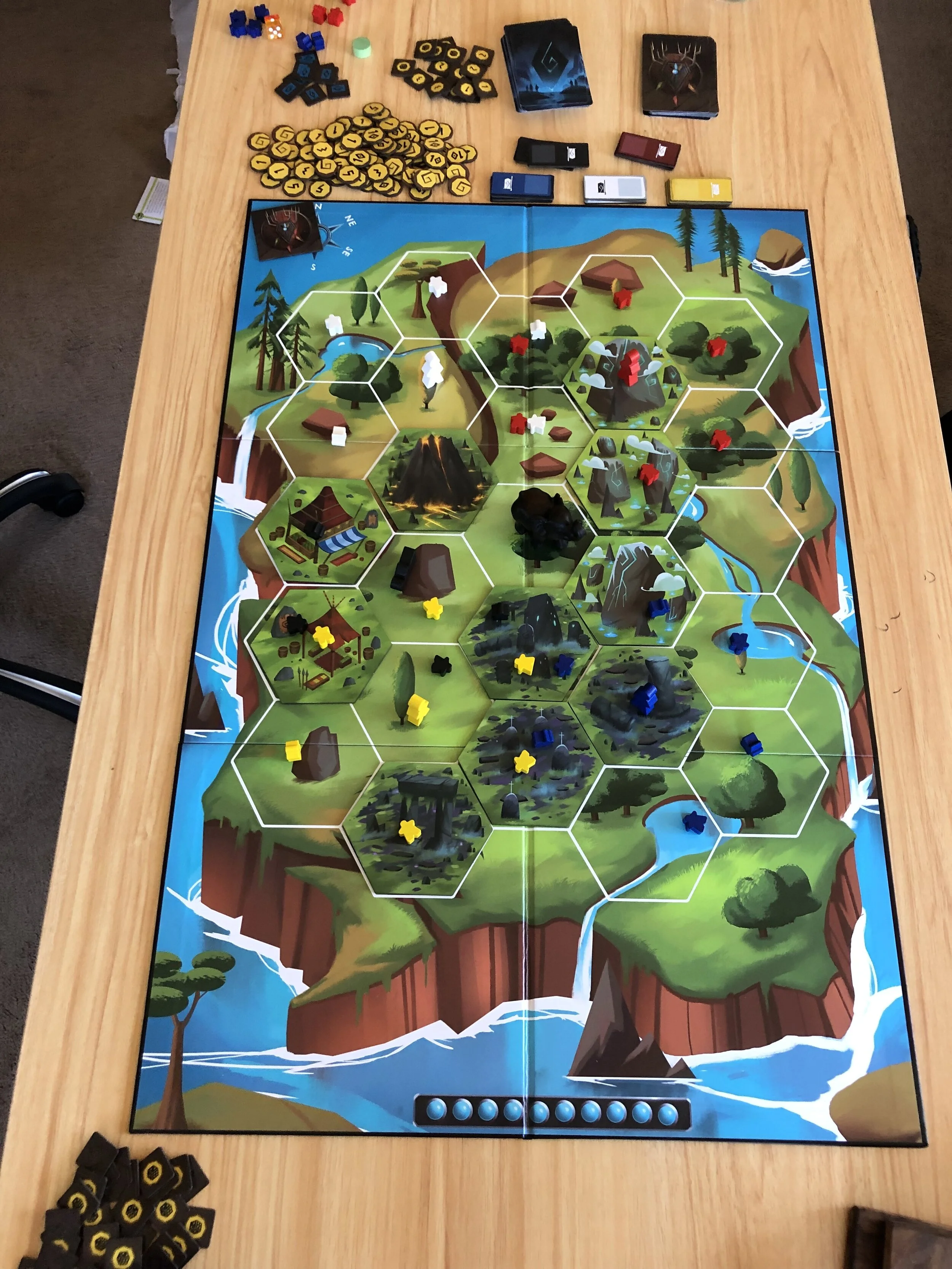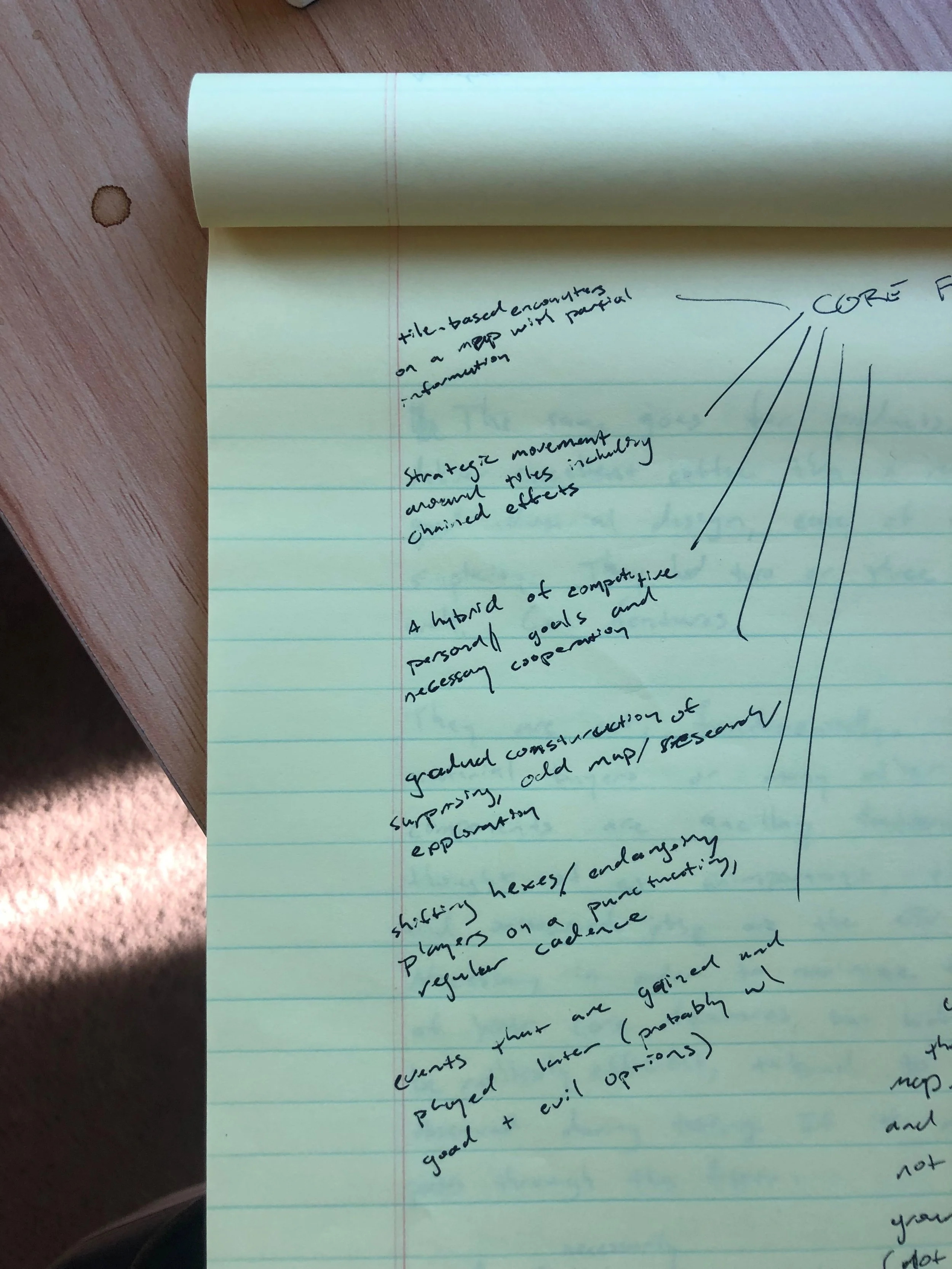Beast Master
Beast master is a 3-5 player board game that is strategic and occasionally hilariously chaotic. You are a Titan on a dangerous and dynamic island, and your goal is create Acolytes and collect more gold than your opponents. But on each round, 1 player plays as the Beast Master who can wreak havoc on the island, erupt the volcano, and control the blood-thirsty beast.
Designed By
John Drexler, Walter Somerville
In Development since
January 2018
Inspired by
Current status
After years of testing, the game is in a great, fun state. We got some very cool art for the game from Sean Thurlow. The phase of testing we’re in requires a lot of tedious small tweaks to figure out how to get the most out of each turn. Things are good right now, but we believe that more tuning will make it great.
In the first half of 2018, we went from index card cutouts to a fully fledged v1 of Odra (a working title that we quickly dismissed as wannabe sci-fi). We knew that there were problems with the game, but we lacked a systematic way to diagnose those problems. One big issue we ran into was that we were fine tuning every part of the game simultaneously. Games are finicky systems. Each part of it is hydraulically linked to all the other parts of it. Small adjustments to the rules can result in huge changes in player experience. On a few occasions we changed 3 or 4 little things at once and managed to completely break the game.
This blog post is about the syntax we used to audit our game systematically, evaluate each part of the game independently, identify what needed work, and ultimately allow us to rebuild the game around its best parts.
Walter and I have been “designing games” in our mind palace for years. We thought up a puzzle-based competitive iOS game, a Jackbox-esque multi-screen heist game, and an epic superhero role-based strategy board game. We talked on Skype and imagined exciting, novel games that had beginnings, middles, and ends. They were sort of like un-playable, puffed up thought experiments. And because they weren’t real yet, they sounded elegant, fair, and perfectly balanced.
We had misplaced confidence in the quality of our ideas, because no player had yet given us that blank stare that says, “this rule makes no sense and there’s a typo on the card… and by the way this isn’t fun.” They needed rigorous editing and brutal feedback and fresh eyes. They needed to be tested.




















